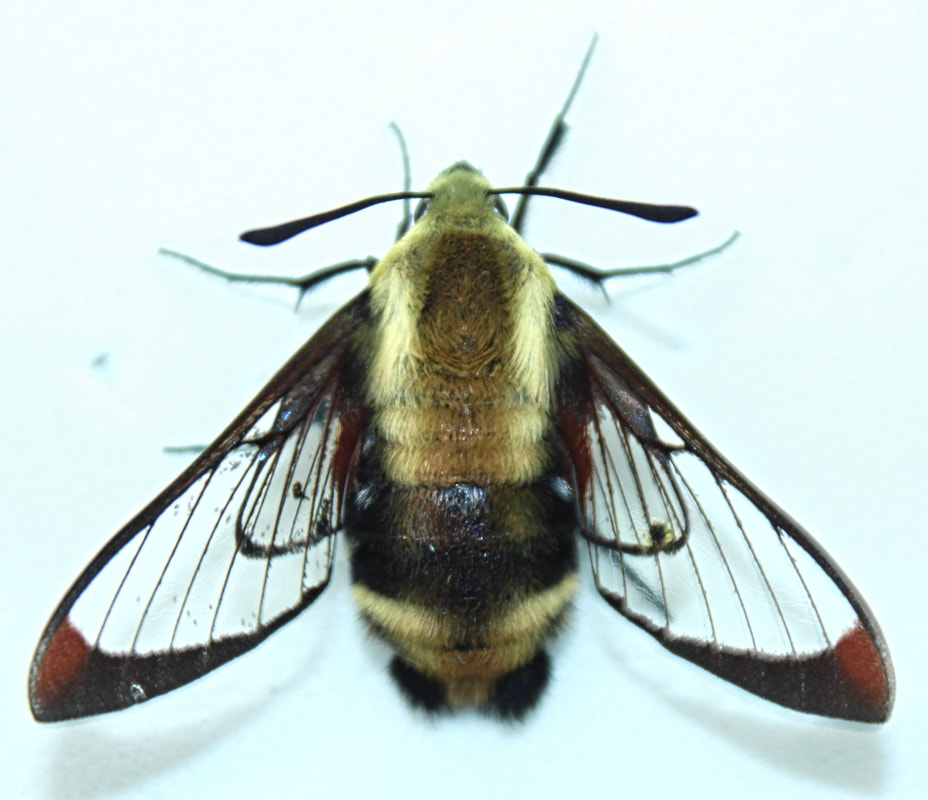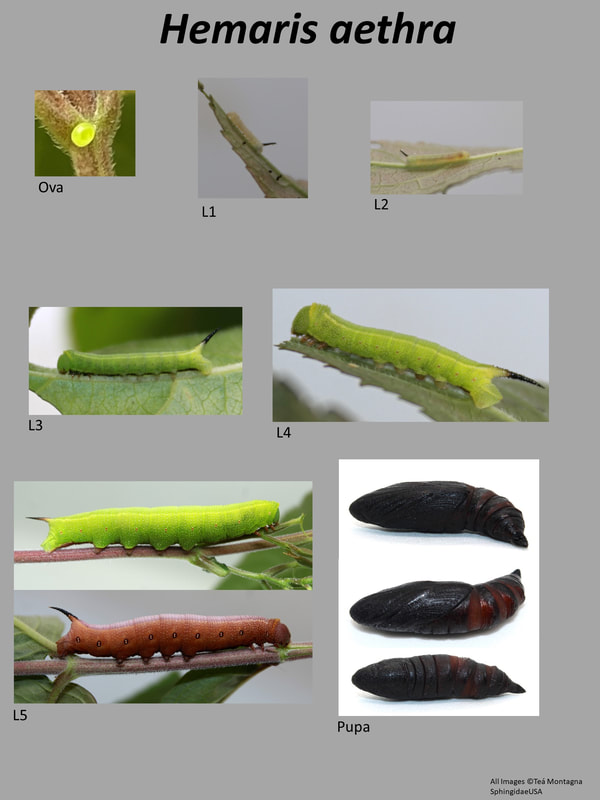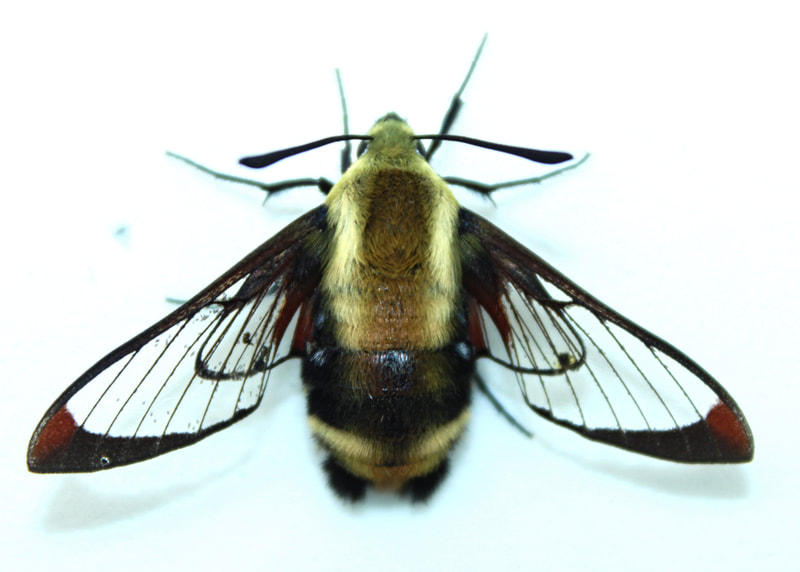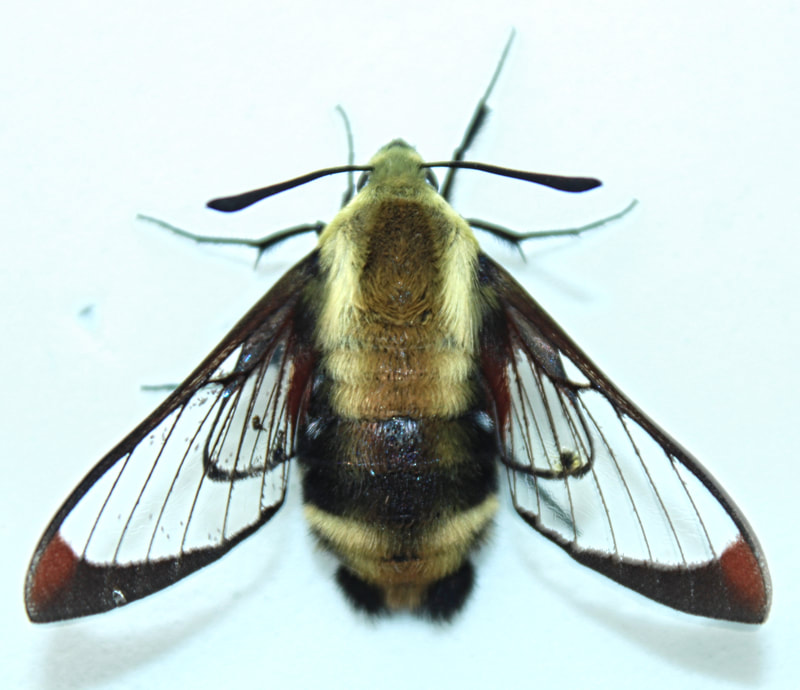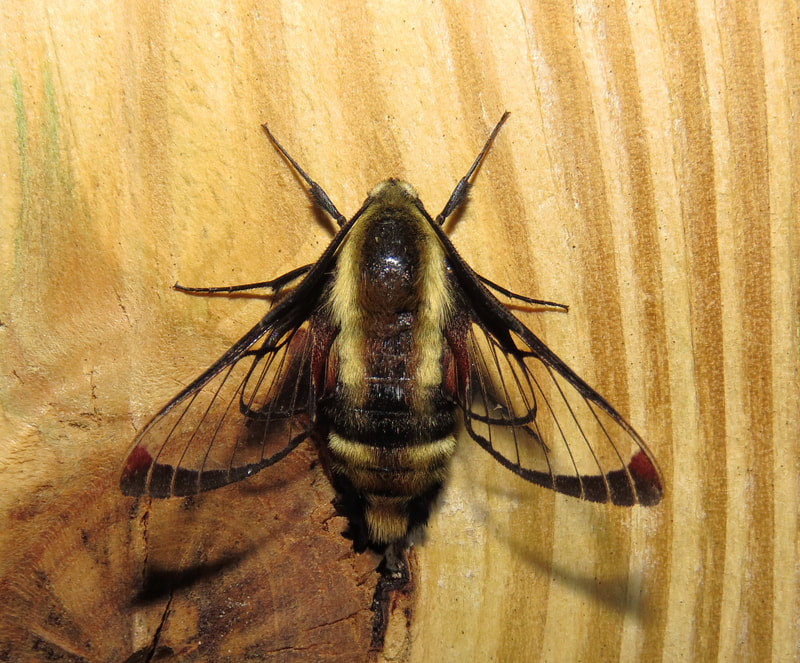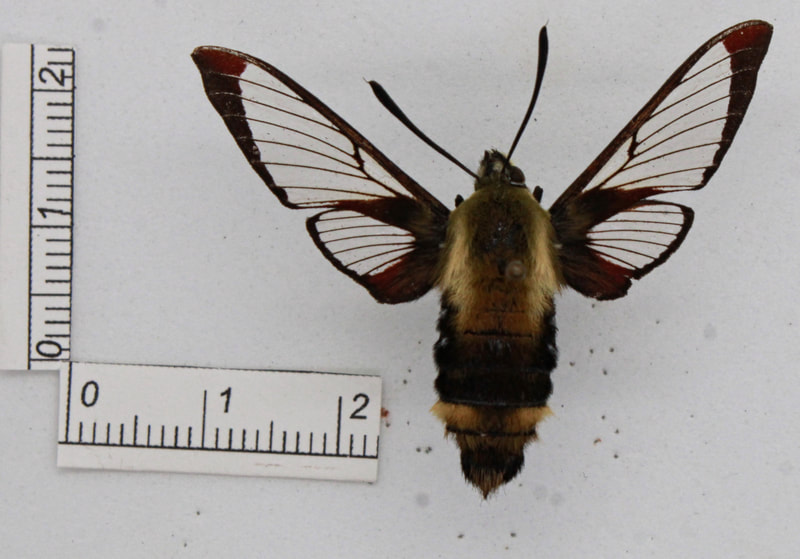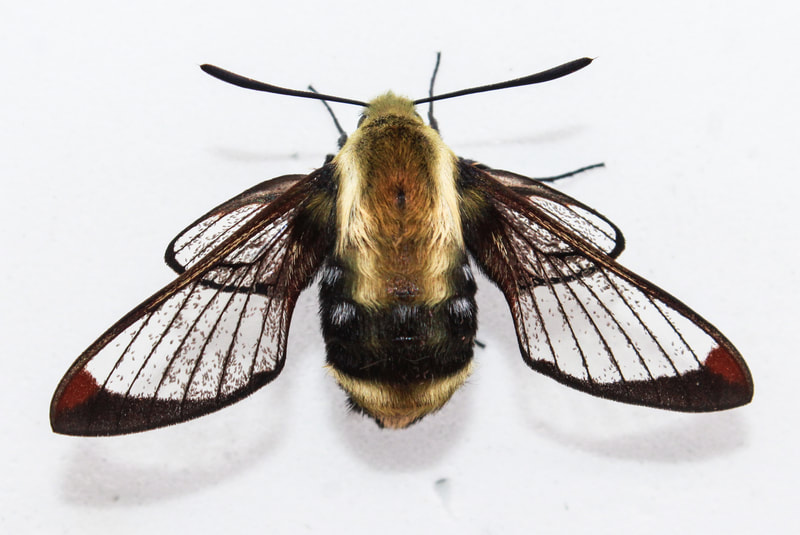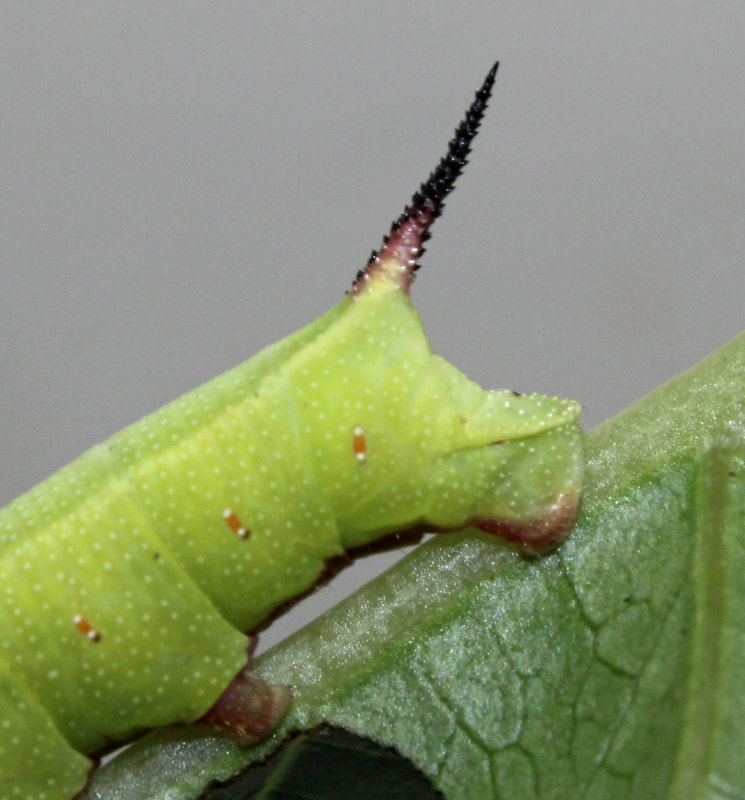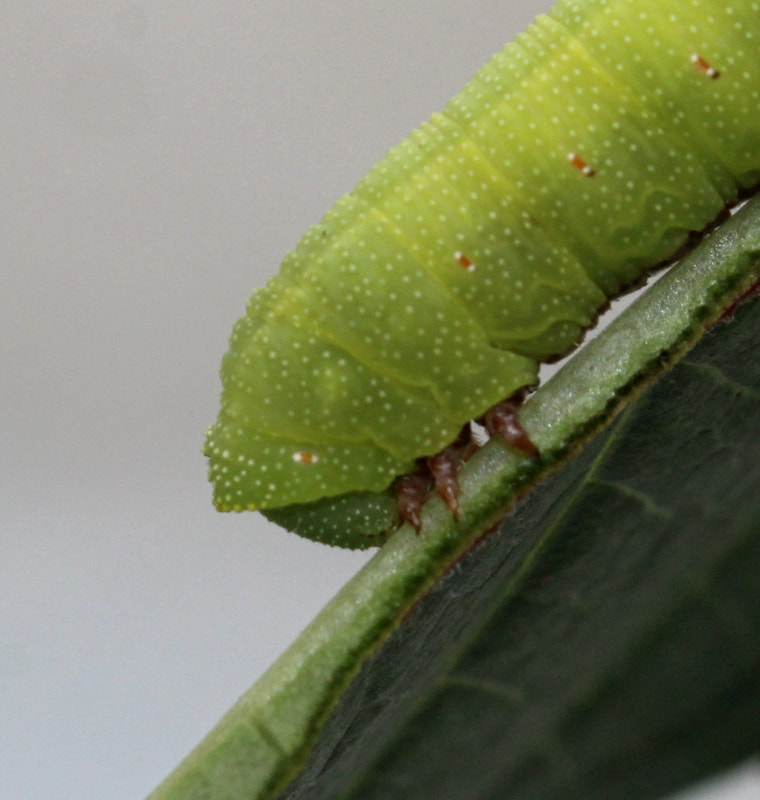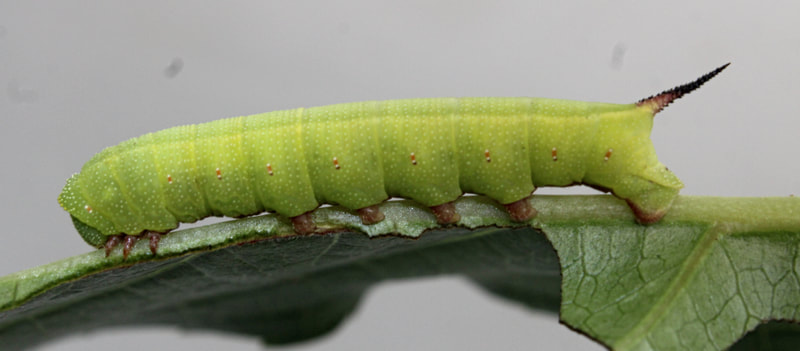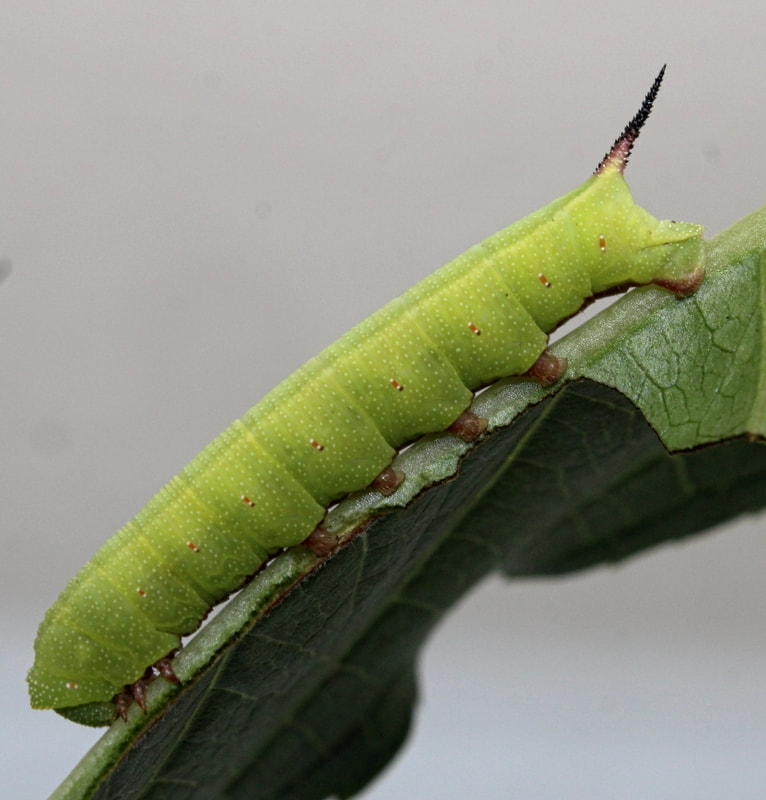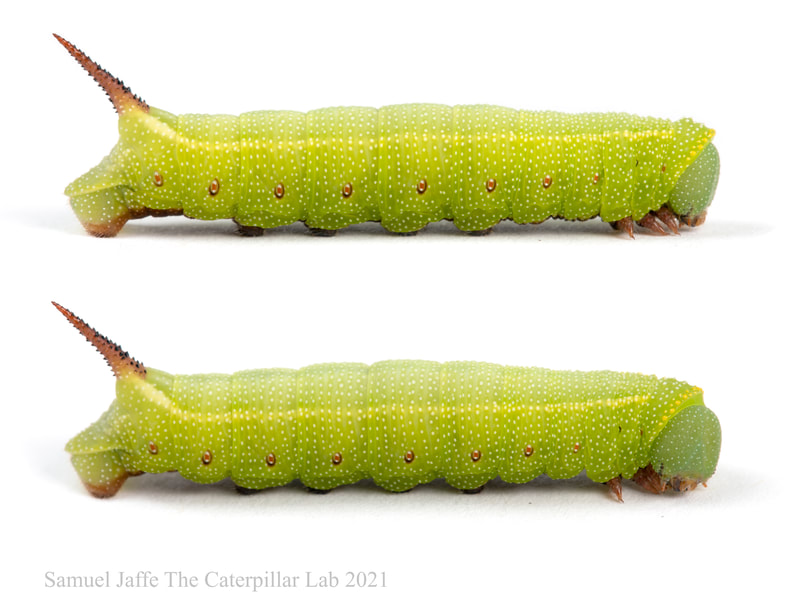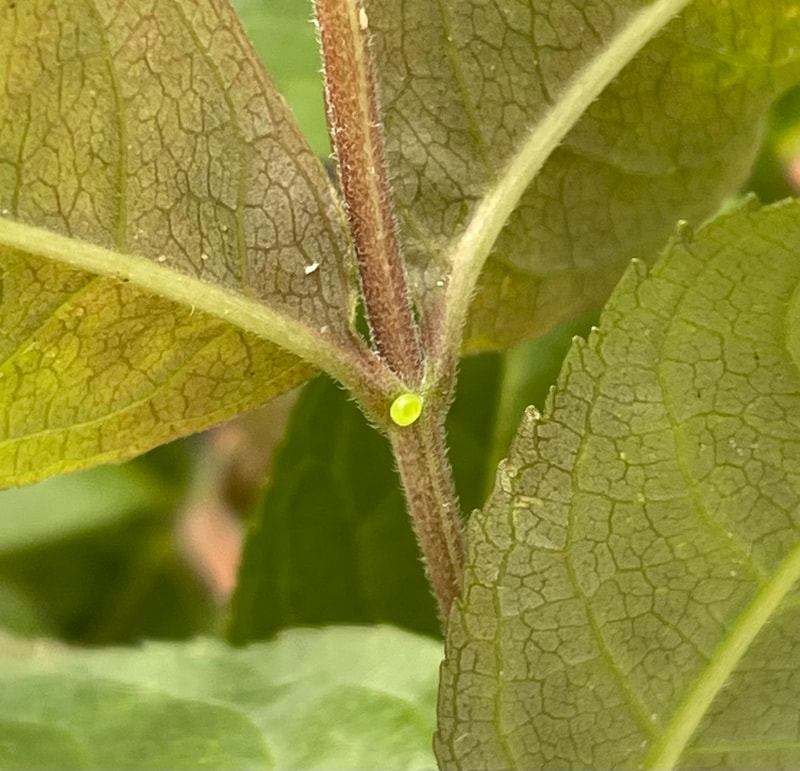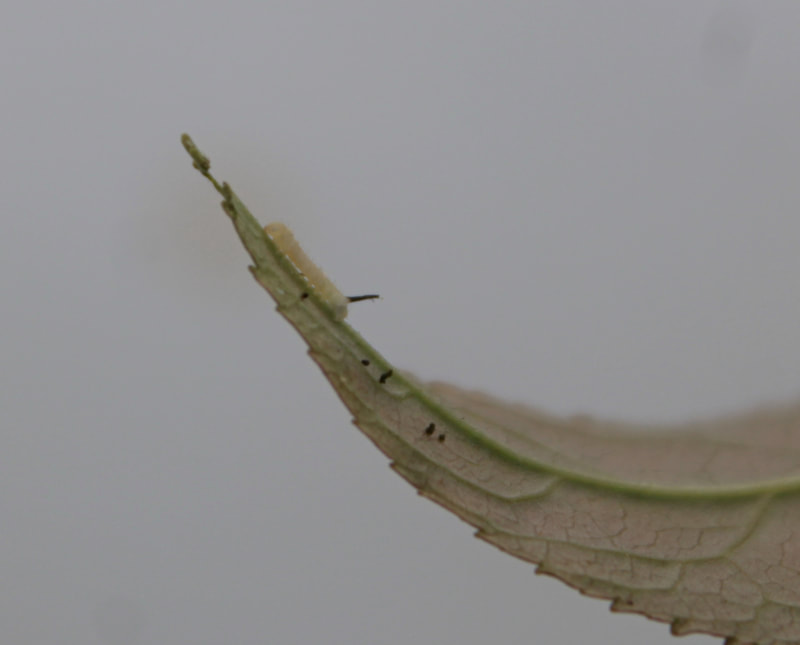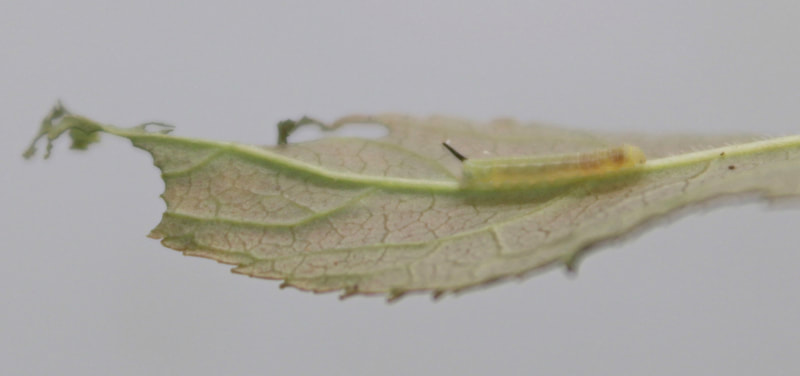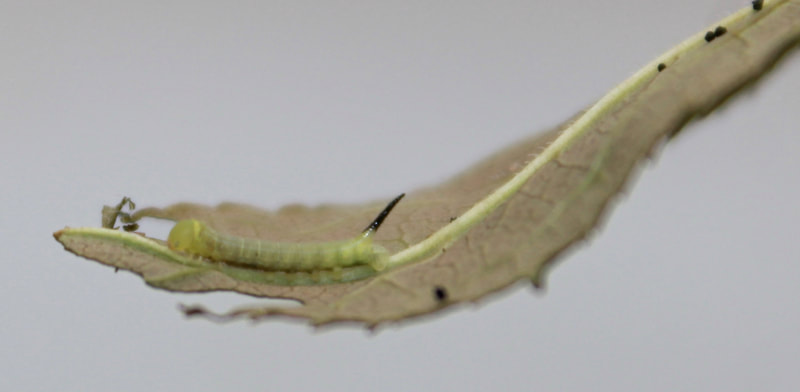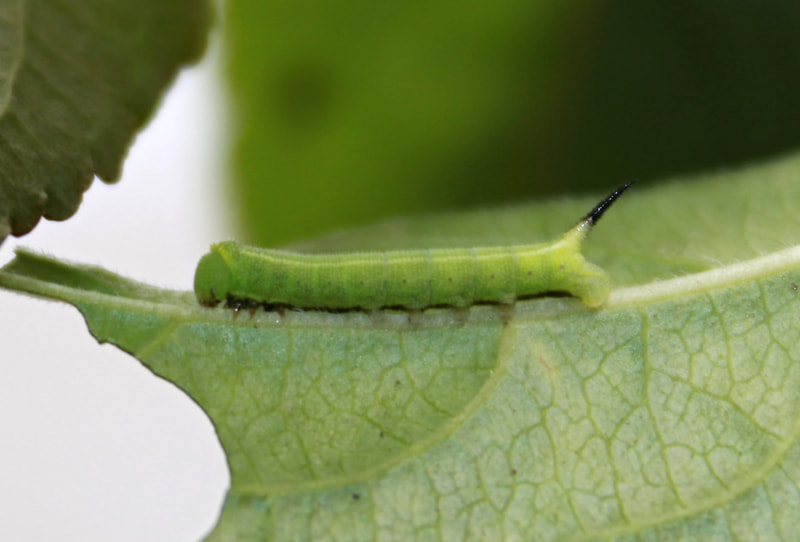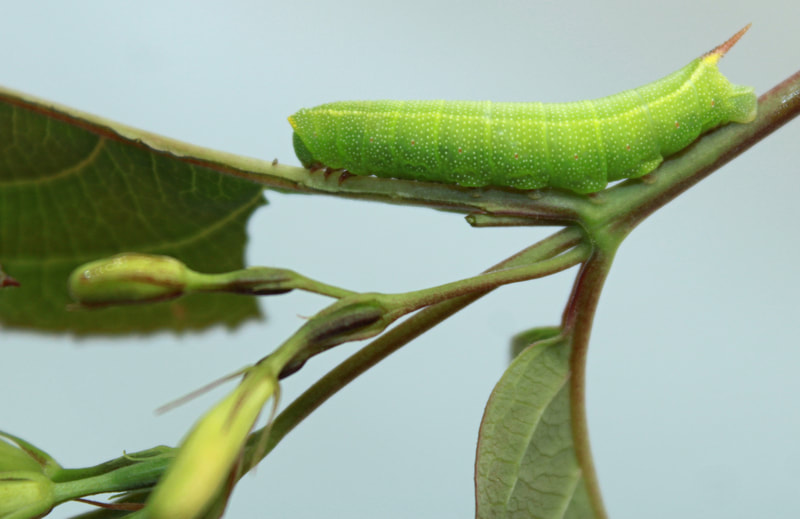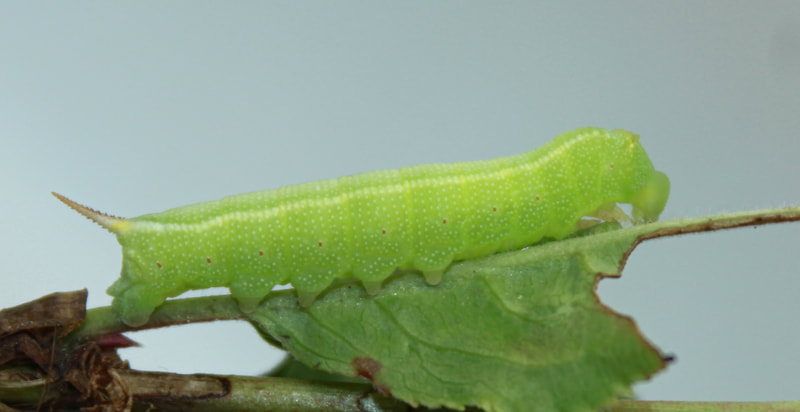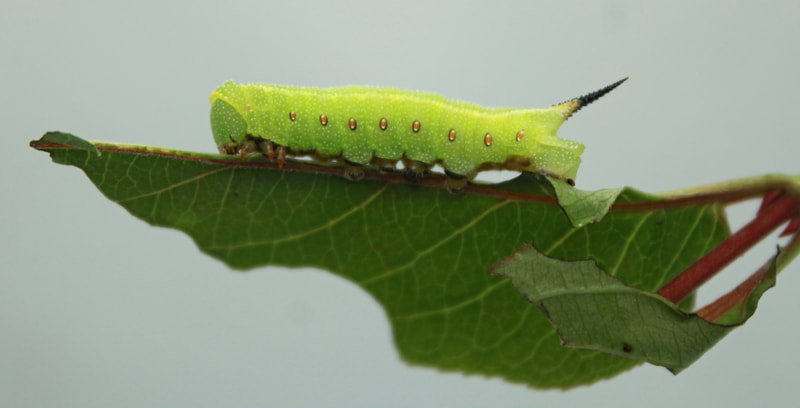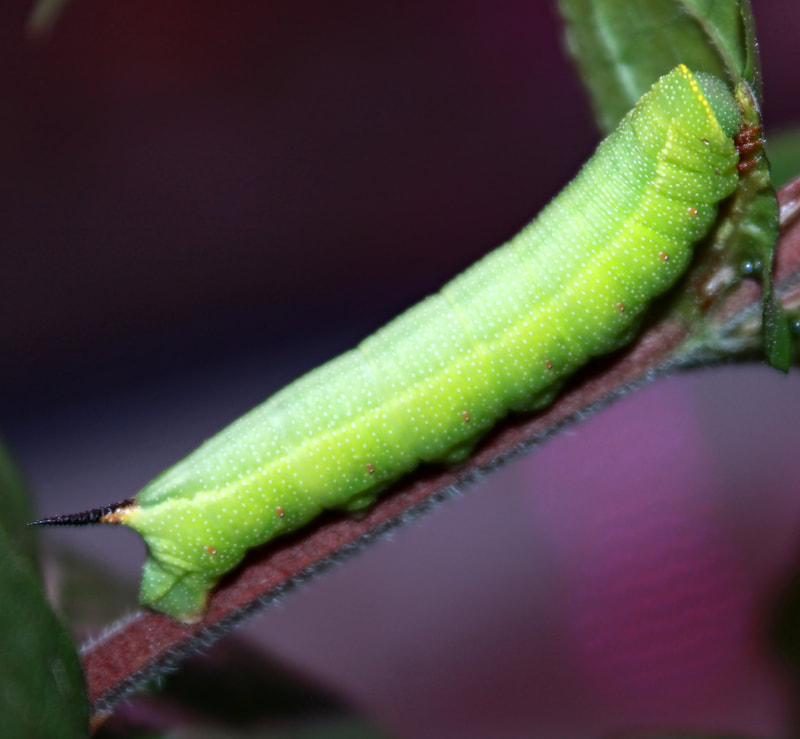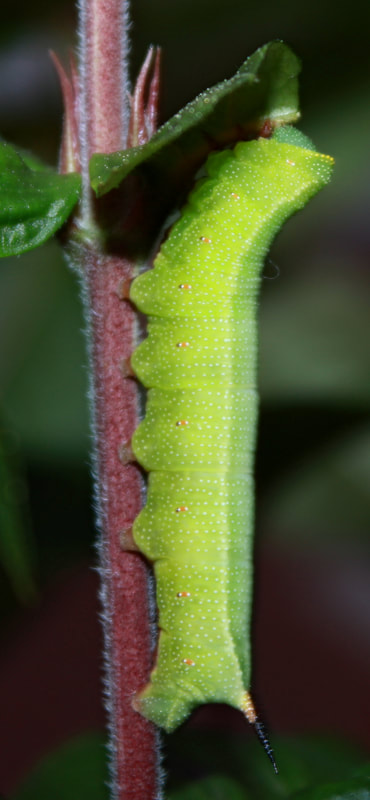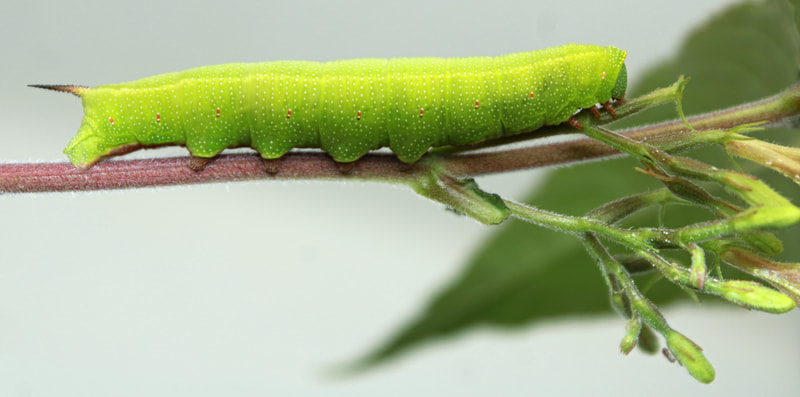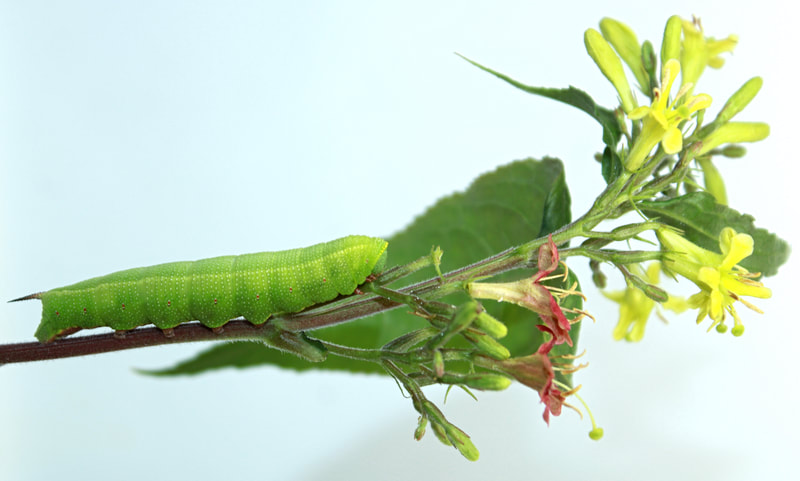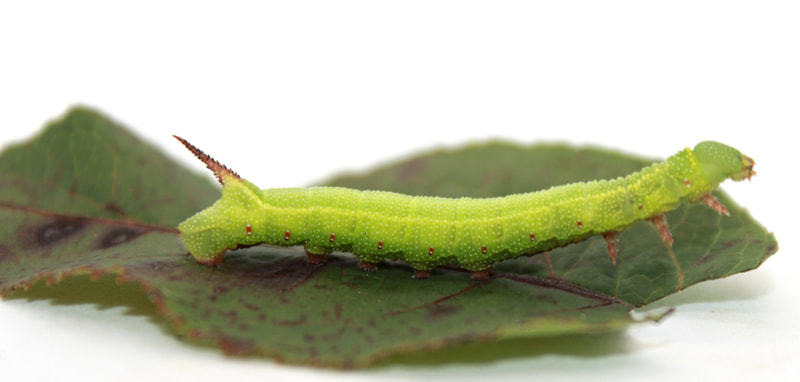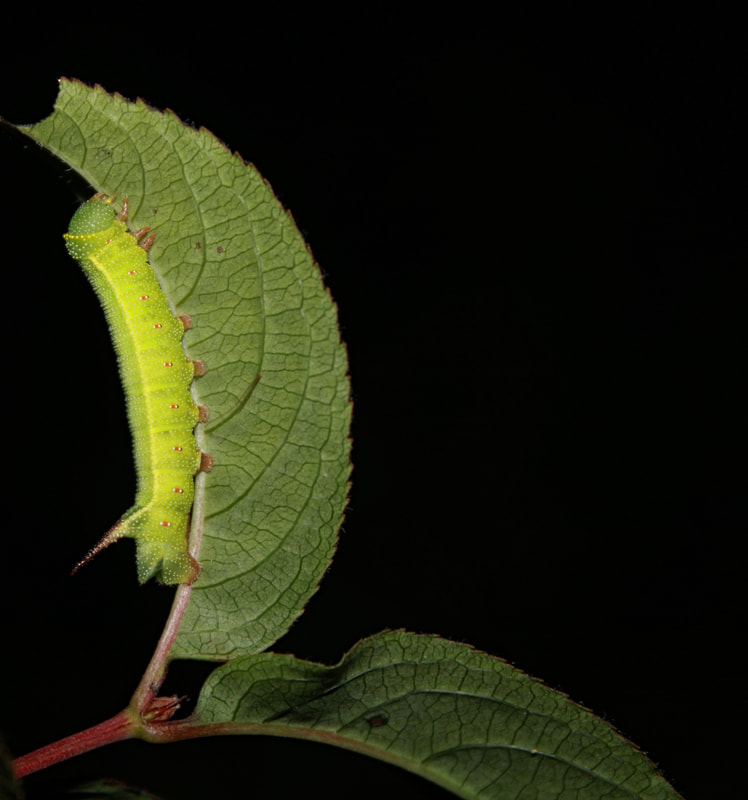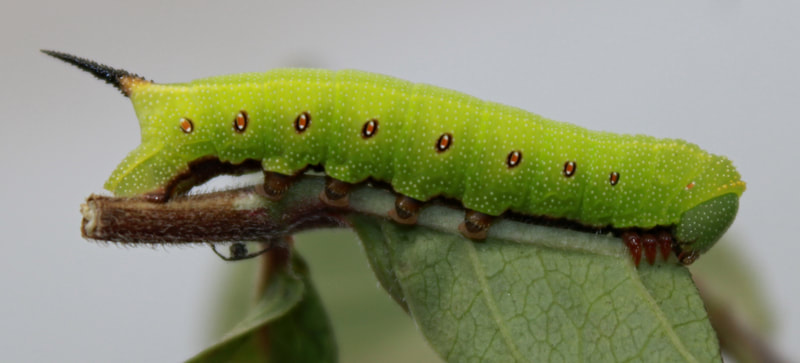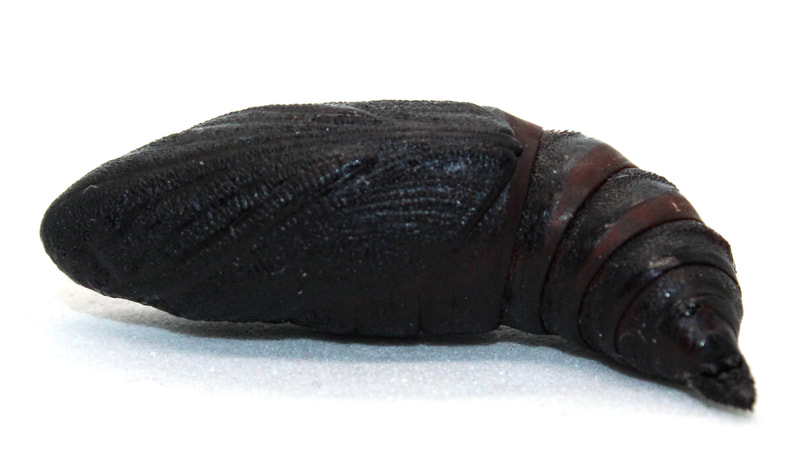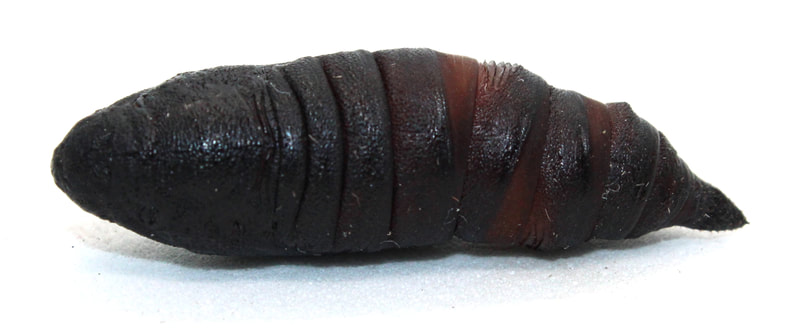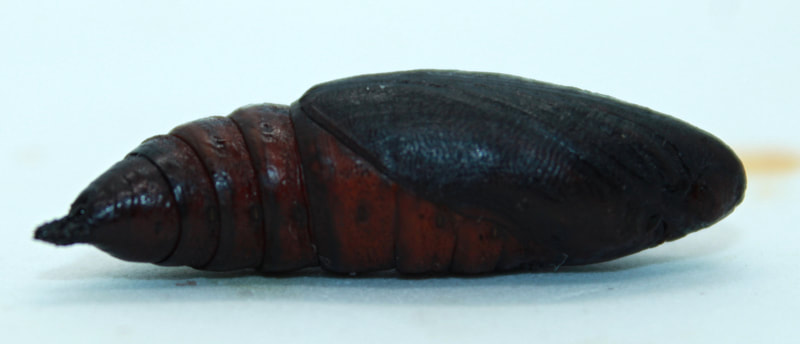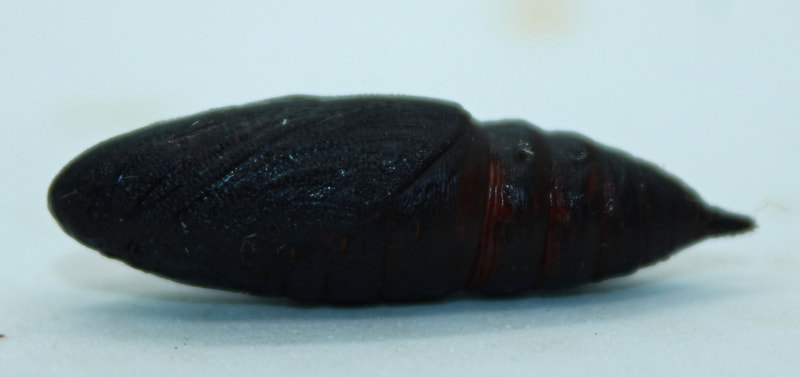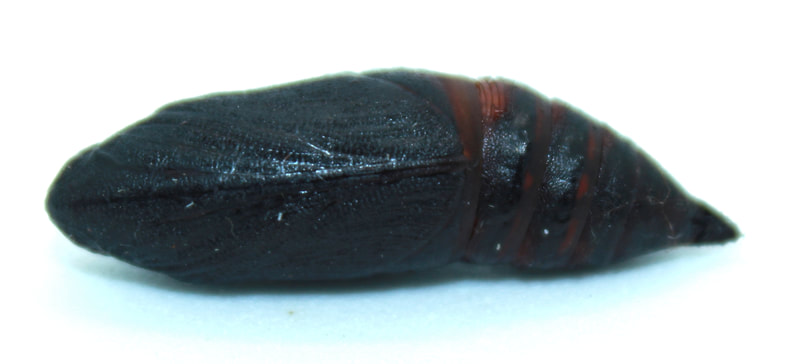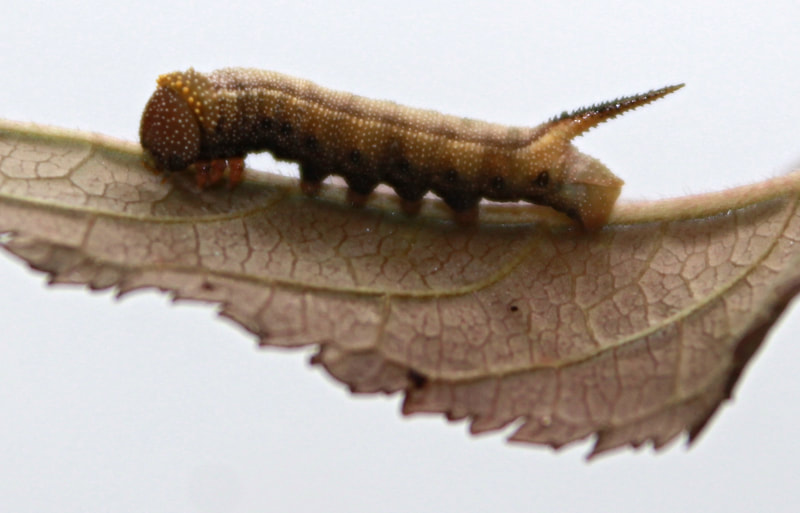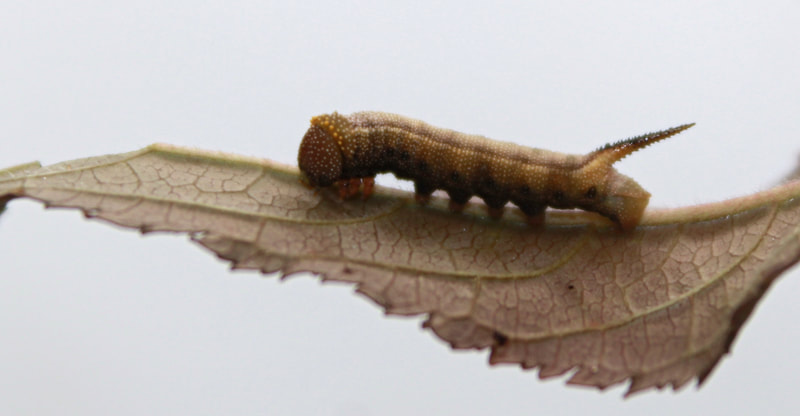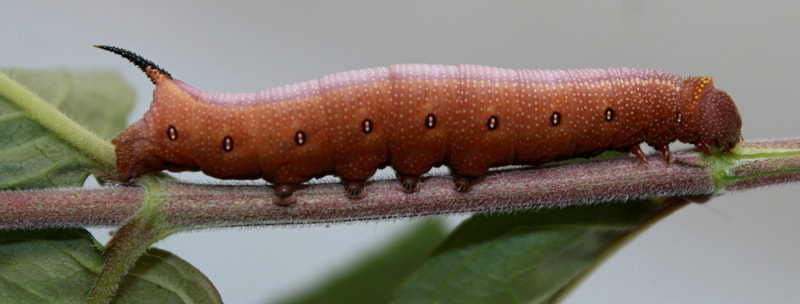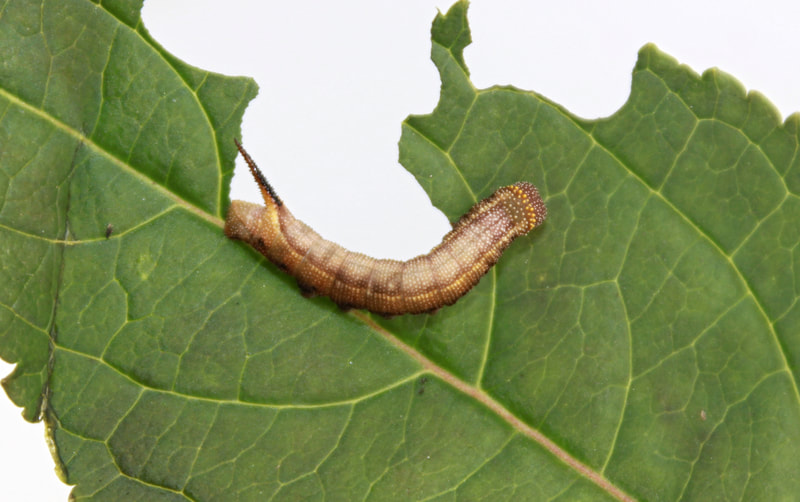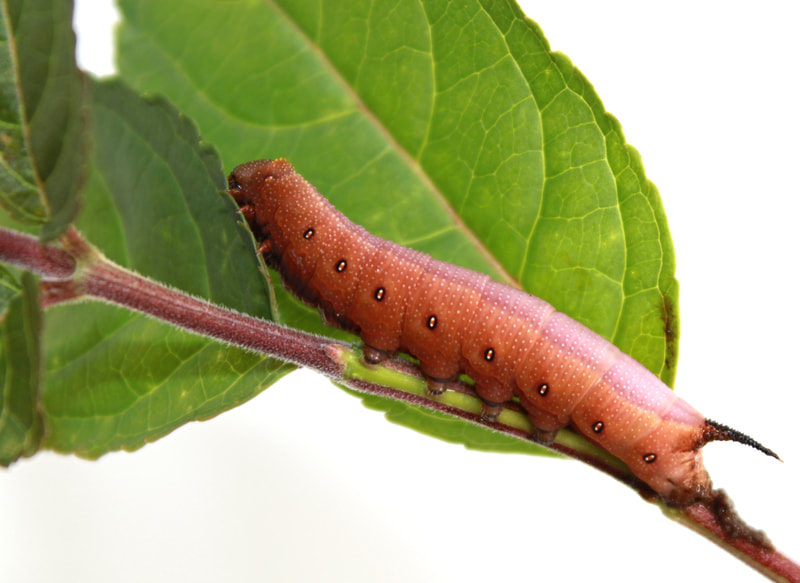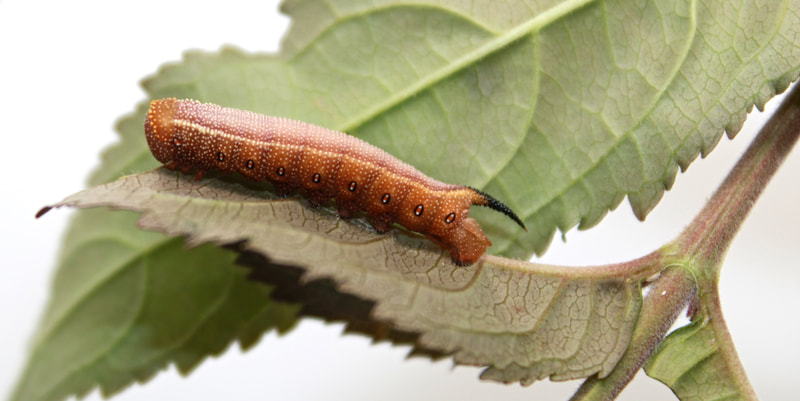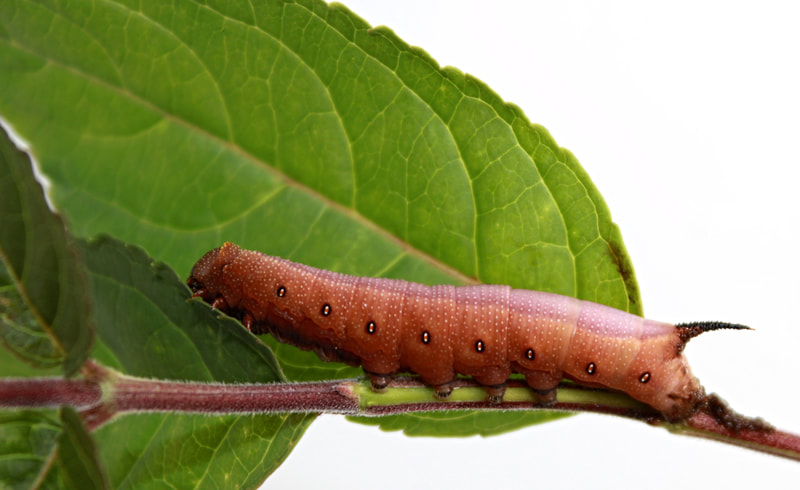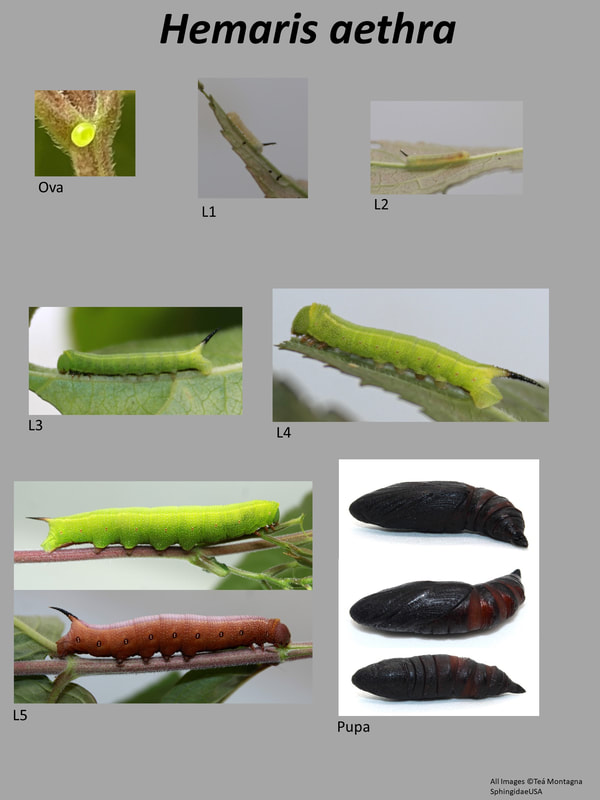|
Common Name(s): Diervilla Clearwing
Ecology and Life History: This is a diurnal moth that is active between May and August. As this species is diurnal, it would be unusual for it to show up at artificial light, or baits. It is easiest to observe adults on flowers during the day. Males and females are visually identical without close morphological examination. Eggs are laid on the leaves of the hostplant Diervilla lonicera and larvae hide along the mid-veins during the day. Larger larvae likely descend the plant and hide during the day. Habitat and Searching for Larvae: This species is a specialist on Diervilla lonicera (Northern Bush Honeysuckle). Larvae can be found virtually anywhere on the plant when they are large, but may descend the plant and hide during the day. Younger larvae are almost always toward the top of the bush on new growth. This species can be found in a variety of habitats, but prefers open rocky slopes where the hostplant grows in abundance. Larvae can be found from May to October across its range. This species fluoresces brightly under UV light in all of it’s instars. Rearing Notes: To obtain eggs, adults should be placed in a flight cage or greenhouse in natural sunlight. A potted or cut hosplant should be included in the cage. Artificial nectar or flowers should also be provided as this species feeds as an adult. Larvae are specialists on Diervilla lonicera. Larvae do not seem to be particularly susceptible to diseases and many can be reared together without issue. Tupperware or screen cages can be used and neither showed higher mortality. Sleeving is another great way to rear this species, though prepupal larvae will chew their way out of sleeves. Pupation can be accomplished by using the paper towel method, or by providing larvae with loose substrate or dried leaves. Host plants: Click here to load this Caspio Cloud Database
Cloud Database by Caspio |
Adult description: This species is quite similar in morphology to Hemaris diffinis, however they are a bit larger (FW 48mm). This species is typically found in the Northern USA and Canada. The easiest way to differentiate the species as adults, is to examine the red spot on the FW apex, in Hemaris aethra, this spot is quite large and bright red. In Hemaris diffinis it is a bit browner in color. Additionally, the yellow coloration is not interrupted by black in the center of the trailing abdominal scales (the scales that come off the tip of the abdomen).
Larval description: L5: Larvae come in two color morphs, a brown/red form and a green form. The spiracles in both forms are bright red and outlined in black, which separates them from Hemaris diffinis. The head is the same color as the body, with a yellow collar. There is a subdorsal stripe that runs the length of the larva. The horn is black and granulose with a reddish base. |
The gallery to the left contains photos of Hemaris aethra adults. If you have a photo that you would like to submit to us, please contact us.
The gallery to the right contains photos of Hemaris aethra larval and pupal stages. If you have a photo that you would like to submit to us, please contact us.
The gallery to the right contains photos of Hemaris aethra larval and pupal stages. If you have a photo that you would like to submit to us, please contact us.
